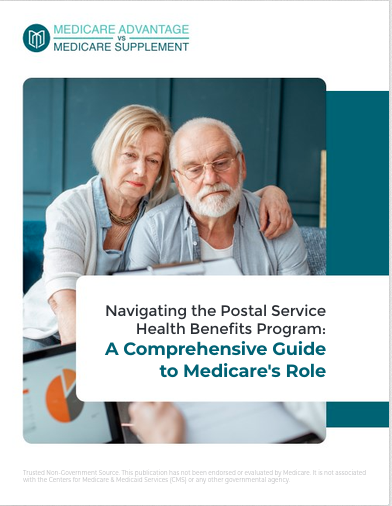Key Takeaways
-
Medicare Part A covers more than just hospital stays. It includes skilled nursing, hospice, and some home health care, but each comes with specific rules and time limits you must know in advance.
-
Your out-of-pocket costs under Part A can vary based on how long you’re in a facility and the type of care you receive. Understanding deductibles, coinsurance, and benefit periods is essential.
What Is Medicare Part A and Why It Matters Before You’re Admitted
Medicare Part A, also called hospital insurance, is often the first component of Medicare coverage people encounter. It forms the foundation of inpatient care benefits and becomes active automatically for most people when they turn 65, provided they’ve paid Medicare taxes for at least 10 years. But Part A’s value isn’t only realized when you’re in a hospital bed. You need to understand how it works before any serious medical situation arises.
By learning the structure, eligibility requirements, coverage limits, and associated costs of Part A ahead of time, you can make better healthcare decisions when it matters most. If you wait until you’re hospitalized to learn how your benefits work, you’re already behind.
Who Automatically Gets Medicare Part A and When
You typically become eligible for Medicare Part A at age 65. If you’re already receiving Social Security or Railroad Retirement Board benefits at that point, you’re automatically enrolled in Part A. You receive your Medicare card about three months before your 65th birthday.
If you’re not receiving Social Security benefits yet, you’ll need to manually enroll during your Initial Enrollment Period (IEP), which spans 7 months:
-
3 months before your 65th birthday month
-
Your birthday month
-
3 months after your birthday month
You can also qualify for Medicare Part A before age 65 if you’ve received Social Security Disability Insurance (SSDI) for 24 months or have been diagnosed with ALS or end-stage renal disease (ESRD).
What Medicare Part A Actually Covers
Medicare Part A is primarily for inpatient and facility-based care. But its benefits go beyond a typical hospital room.
Inpatient Hospital Care
This is what most people associate with Part A. It covers:
-
Semi-private rooms
-
Meals
-
General nursing
-
Medications and supplies used during your inpatient stay
To qualify, you must be formally admitted as an inpatient by a doctor. Observation status, even if you’re in a hospital bed overnight, does not count.
Skilled Nursing Facility (SNF) Care
After a hospital stay of at least three consecutive inpatient days (not including the discharge day), Part A may cover skilled nursing care. This includes:
-
Physical therapy
-
Occupational therapy
-
Speech-language pathology
-
Intravenous medications and wound care
Coverage is limited:
-
Days 1 to 20: Covered in full
-
Days 21 to 100: Daily coinsurance applies (in 2025, this is $209.50 per day)
-
After day 100: You pay all costs
You must use a Medicare-certified facility, and your condition must require daily skilled care.
Hospice Care
If your doctor certifies you have a terminal illness with a life expectancy of six months or less, Part A covers hospice. Services include:
-
Pain and symptom management
-
Counseling and grief support
-
Short-term inpatient respite care
-
Durable medical equipment for comfort
Hospice can be provided at home, in a hospice center, or a facility that contracts with Medicare. You may pay a small copayment for medications and short-term respite care.
Home Health Care
Part A can also cover limited home health care services if you’re homebound and need intermittent skilled nursing care. This may include:
-
Wound care
-
Injections
-
Physical or occupational therapy
Part A only covers these services if they follow a qualifying hospital or SNF stay. Otherwise, Medicare Part B typically takes over.
What Part A Does Not Cover
To prepare effectively, you should also understand what Medicare Part A excludes. It does not cover:
-
Private-duty nursing
-
Long-term custodial care (e.g., help with bathing or dressing)
-
Most outpatient care
-
Prescription drugs you take at home
-
Emergency room visits without inpatient admission
If you need coverage for these services, you would need to rely on Medicare Part B or other supplemental insurance options.
Understanding the Part A Benefit Period
Part A operates on a “benefit period” system, not an annual deductible model. A benefit period starts when you’re admitted to a hospital or SNF and ends when you haven’t received inpatient or SNF care for 60 consecutive days.
This structure resets the deductible and cost-sharing:
-
Each new benefit period comes with a new deductible (in 2025, it’s $1,676 per benefit period)
-
You can have multiple benefit periods in one year, leading to multiple deductibles
This is different from many private insurance plans, which use a calendar-year deductible.
What You Pay Under Medicare Part A
While most people pay no premium for Medicare Part A, due to sufficient work history (40 quarters), there are other costs to plan for.
Inpatient Hospital Costs (2025)
-
Deductible: $1,676 per benefit period
-
Days 1–60: $0 coinsurance
-
Days 61–90: $419 per day
-
Days 91–150 (lifetime reserve days): $838 per day
-
After 150 days: You pay all costs
Each person has 60 lifetime reserve days for hospital stays beyond day 90. Once used, they’re gone forever.
Skilled Nursing Facility Costs (2025)
-
Days 1–20: $0
-
Days 21–100: $209.50 daily coinsurance
-
After 100 days: Full cost is your responsibility
Hospice and Home Health Care Costs
-
Hospice: You may pay up to $5 per prescription drug and 5% of the Medicare-approved amount for respite care.
-
Home health care: Usually no cost for services under Part A.
How to Prepare Financially and Logistically
Understanding your Medicare Part A benefits is only the first step. You also need to be proactive about planning.
Know Your Admission Status
Always confirm with hospital staff whether you’ve been formally admitted or are under observation. Only an inpatient admission triggers Part A hospital coverage and counts toward your SNF benefit eligibility.
Track Your Benefit Periods
Because the benefit period resets after 60 days, it’s important to track hospitalizations. Multiple benefit periods in a year can lead to repeated deductibles.
Consider Supplemental Coverage
Medicare Part A does not have an out-of-pocket maximum. That means there is no limit to what you might owe in a prolonged or repeat hospitalization. Many people choose to enroll in a supplemental plan to reduce exposure to high costs. These are separate from Medicare and must be reviewed carefully.
Build a Coverage Strategy with Part B
Remember, Medicare Part A only addresses inpatient and facility-based care. Doctor visits, outpatient services, labs, emergency room care, and preventive screenings fall under Medicare Part B. To get the full spectrum of coverage, you usually need both Parts A and B.
Timing and Enrollment Tips to Avoid Delays
If you’re not automatically enrolled, missing your Medicare Part A enrollment window could lead to penalties or delayed coverage. Here’s how to stay on track:
Initial Enrollment Period (IEP)
As noted earlier, this is your first chance to enroll, starting three months before your 65th birthday and ending three months after. If you miss this, you must wait for the General Enrollment Period.
General Enrollment Period (GEP)
Runs from January 1 to March 31 each year. Coverage starts July 1. Delayed enrollment during this period may result in a late enrollment penalty.
Special Enrollment Period (SEP)
If you’re still working and covered under an employer group health plan, you can delay Medicare Part A without penalty. When that coverage ends, you qualify for a Special Enrollment Period lasting 8 months.
Part A in the Context of the Full Medicare Picture
Medicare Part A only makes sense when viewed as one part of the larger Medicare structure. It forms a foundational base, but it’s not all-inclusive.
If you expect more than occasional hospital stays in retirement, you’ll need to evaluate how Part A interacts with:
-
Part B for outpatient care
-
Part D for prescription drugs
-
Additional coverage for vision, dental, or long-term care
Knowing this helps you design a well-rounded healthcare plan for your later years.
Why Knowing This Now Prevents Future Shock
Being informed ahead of time lets you:
-
Avoid denied claims due to misunderstanding observation vs. inpatient status
-
Prevent surprise hospital bills from unexpected coinsurance charges
-
Track benefit periods to anticipate when deductibles reset
-
Choose supplemental options wisely while you’re still eligible
If you wait until you’re hospitalized to figure all this out, you lose valuable time, money, and options.
Be Proactive About Medicare Part A Before the Need Arises
Understanding Medicare Part A well before you’re admitted to a hospital is more than a smart move—it’s a financial safeguard. By recognizing coverage boundaries, tracking your benefit periods, and coordinating with other Medicare components, you build a solid foundation for your healthcare journey. Don’t wait until a crisis to figure it out.
For tailored advice on Medicare Part A and how it fits your specific situation, speak with a licensed agent listed on this website.










